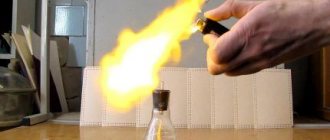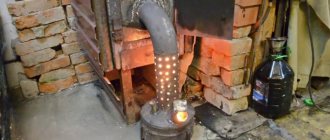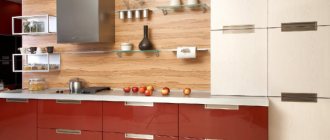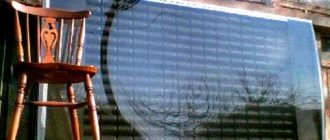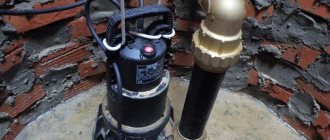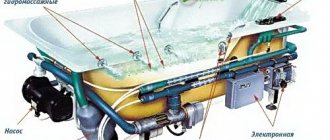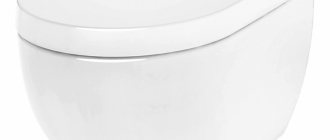Fogging of windows, the appearance of fungus on the walls, stuffiness, high humidity indicate air stagnation. Ventilation using a window is not always possible, and often brings not only freshness, but also dust, noise, and exhaust gases.
You can create conditions for air exchange and remove excess moisture and heat using air conditioners with forced ventilation. This is a combination of the functions of an air conditioner, which only cools the air, and supply ventilation, which allows you to mix fresh air with the already circulating air.
“Intakes” function only for air intake. After passing through the filters, it enters the room.
Air conditioner with inflow - what is it, device, principle of operation
A classic split system works exclusively to cool the air in the room. However, over several decades of using such technology indoors, several pressing problems have arisen:
- Large dimensions of the equipment. Because of this, their installation is often associated with associated troubles, for example, in the form of the use of specific installation where it is impossible to simply install bulky equipment. Modern models lack all this. They are light, small-sized and have an attractive appearance.
- The likelihood of the spread of pathogens with air currents. Microorganisms from the air can accumulate in the system and then spread throughout the interior. Modern devices have built-in modules for disinfecting incoming atmospheric flows, and therefore they are completely safe from this side.
- Lack of fresh air flow. According to the standards, about 30 cubic meters should be supplied per person in a room within an hour. meters of fresh air.
Modern duct-type air conditioner with fresh air supply Source sovet-ingenera.com
All these problems can be solved by installing a modern air conditioner with a forced-air ventilation function in a wall-mounted or duct version.
Device and principle of operation
The main difference between an air conditioning device with an air supply and a standard system is the presence of an air duct that takes in air from outside. Otherwise, its device is similar and has the following main parts:
- Evaporator equipped with a heat exchange circuit and a fan.
- Filter system.
- Electronic control unit.
- Outdoor module – including a compressor, cooler, condenser, turbine, mixing chamber.
In addition, the device can be equipped with a heater with an electric or water circuit to heat the incoming air during cold periods.
The operation of such an air conditioner in the supply ventilation mode obeys the following algorithm:
- Fresh air enters the evaporator unit through the air duct.
- Next, the mass of the outer atmosphere mixes with the inner one.
- After this, the flow passes through a sequential system of additional devices - heater/cooler, dehumidifier/humidifier, disinfectant, etc.
Passing through a perfect cleaning system, street air becomes sterile Source premium-landing.ru
- At the end, the finished stream enriched with fresh air enters the room.
On a note! Installing a supply air conditioner is especially important in conditions where it is not possible to ventilate the room naturally. For example, there is smoke, dust, gas, or just cold outside.
Static pressure chambers
The plenum is used in conjunction with vent grilles to reduce pressure, equalize airflow, and dampen noise. Cameras are very bulky, but without them it is useless to take on such a project.
To supply air to the rooms, I used Systemair ODEN-1-300×100 static pressure chambers.
I need from 120 to 250 m3 for each room - this is from 33 to 70 l/s unit converter.
According to the installation instructions for the static pressure chamber, a size of 100 mm by 300 mm is suitable for me - the flow for it is about 74 l/s at a pressure difference of 22 Pa or 52 l/s at a pressure difference of 11 Pa.
I was imbued with respect for the Swedes - all the holes in the chambers and mufflers were covered with plastic “caps”. A few photos:
The black tube is a braided cable that moves the round perforated diffuser. The purpose of the diffuser is to regulate the flow, increasing or decreasing the resistance to the flow, and it is natural to disperse the flow itself in the chamber so that it does not hit directly at the exit from the chamber with a narrow jet, but is distributed over the entire cross-section of the exit. Transparent tubes are designed for connection to a differential pressure gauge during commissioning. The label indicates the K-factor, from which you can measure the pressure difference with a differential pressure gauge to obtain the air flow through the chamber.
The main advantages of supply air conditioning
Among the main advantages of an air conditioning system with air supply are the following:
- Year-round refreshment of the atmosphere at home. The air taken from outside is automatically heated or, on the contrary, cooled, depending on the equipment settings and internal microclimatic conditions. Thanks to this, the atmosphere in the house will always be fresh and at the right temperature - as opposed to natural ventilation, when when you open the vents or windows, the air in the house either immediately cools or heats up, which makes this method very limited and dependent on weather conditions.
The external module of the system provides the intake of street air to enter the enclosed space. Source stroy-podskazka.ru
- Deep cleaning of air supplied from the street. A modern split system with a supply ventilation function is equipped with a special multi-level filtration system. This allows you to maintain a fresh home atmosphere around the clock, regardless of external conditions - smoke, smog, exhaust gases, dust and other factors that pollute the environment.
- Coverage of different areas and premises. New models of climate control equipment of this type provide ventilation simultaneously in several areas of the living space - depending on local microclimatic conditions. For example, the kitchen requires certain values of ventilation intensity and temperature, while the bedroom requires completely different values.
- Automatic operation control. Heating elements, outdoor and indoor unit components are controlled by a high-speed processor based on user-specified settings and sensors. For this purpose, the ventilation rate and the desired heating level in the room are set through the control panel.
The split system works automatically - the user only needs to turn it on and set the settings Source stroy-podskazka.ru
- Minimal technogenic impact on others. The newest pieces of equipment are small in size and weight, making them convenient to install on a wall or ceiling (depending on the version). Thanks to the special materials they contain, the equipment produces virtually no noise or vibration.
Note! The ventilated air conditioner is equipped with microprocessor high-speed control. Air conditioning and ventilation parameters are maintained automatically all year round, quite accurately according to weather conditions. Therefore, the device consumes only as much energy as required to operate within the specified settings.
See also: Catalog of companies that specialize in complex installation of internal engineering systems
Kitchen hood and umbrella
Along with the supply ventilation, I decided to make a “proper” hood for the kitchen.
- I installed a Systemair K 160M at 500m3/hour as an exhaust fan
- There is a 1 m long muffler in front of the fan
- in front of the muffler - a simple filter to catch grease from the kitchen umbrella and a spring-loaded check valve
- everything is assembled with a 150 pipe, this time plastic
- The original kitchen hood fan does not turn on
At the same time, I assembled a natural exhaust from the kitchen with a 125 pipe, also with a check valve, which is spring-loaded in the open state (when the exhaust fan is turned on, the check valve closes). The outlet from the natural hood was made into a storage room and the cross-section was reduced.
Everything is collected in the pantry, which borders the kitchen.
I liked the result. There is practically no noise from the hood, even at maximum. The power of the fan is impressive; the fine sand that was in the pipe was sucked in like a vacuum cleaner.
And most importantly, thanks to the silencers, I stopped hearing the workers from the top floor (the sound came through the ventilation shaft).
Installation photo:
Additionally, we will install a small muffler and an iris valve in the toilet to regulate the flow. Without adjustment, the draft was such that in winter it was impossible to sit on the toilet - it blew away. After the iris one I installed a check valve.
Varieties
The family of supply air conditioners has the following 3 main types:
- Membrane.
- Modular system.
- Modified outdoor unit.
Let us examine in detail the features of their design and functioning.
With the correct selection of parameters, the supply air conditioner provides a year-round supply of fresh air in the house Source glavvent.com
Membrane
The main functional element of this type of supply split systems is a special control membrane. It has a special molecular structure through which only oxygen can pass freely. At the same time, other heavier gases are retained. Thanks to this, oxygen-enriched air enters the room.
However, equipment of this type is not common on the domestic market. In addition, its high cost and difficulty in installation repel the average consumer and force them to look for an alternative solution.
Modular system
A modular split system is essentially an addition to an already installed air conditioning unit, and along with ventilation, provides an uninterrupted flow of fresh air. Among its main design features are:
- It is based on a recuperator equipped with a separate air duct.
- The outdoor unit is installed next to the already installed outdoor unit of the air conditioner itself.
- When passing through the air duct network, the air taken from the street is heated and mixed with the internal flow of the ventilation system.
The device of a modular type air conditioner Source dantex.ru
According to the principle of operation, the device is a small-sized exhaust system that provides fresh air into the air conditioning system. The main advantage of this option for organizing ventilation is its relatively low cost. However, along with this there are a number of disadvantages:
- The need to install an additional external unit next to the outdoor module.
- Relatively small inlet power - no more than 20 cubic meters. m. per hour.
- Limited production.
A modular air conditioner is suitable for small spaces or as an addition.
Gratitude to the masters
Being a beginner in the design and installation of ventilation systems, I resorted to constant help and advice from experts from the my.mastergrad.com forum.
Thank you very much for the constructive and critical advice from the experts, without whom I would not have been able to create and configure the system.
- user Kim for extremely valuable advice and attentive attitude to my questions
- user Fresh for constant support
- user mr-h for valuable advice and active participation
Video description
Video about how useful it is to install a supply air conditioner:
Reference! Systems of this type provide no more than 10% of fresh air from the total flow driven by the air conditioner. Channel type models have a slightly higher figure - about 20-25%. The greatest high-quality influx of outside air can only be provided by separately installed full-fledged air inlets. The average productivity of household models is 100-160 m³/h.
Finishing
When my wife looked at all these pipes, she “affectionately” called them a workshop. But after the final finishing, most of it was hidden. The ducted air conditioner and most of the pipes are hidden under the false ceiling in a small hallway.
Video description
Video example of installation and use of a supply air conditioner:
- In solving the problem of ensuring normal ventilation in spacious rooms - living rooms, halls, gyms - column-mounted supply split systems are suitable. They are distinguished by high productivity and better distribution of flows in space.
- Power, installation location, control type and other important parameters must fully comply with specific operating conditions.
Important! When choosing an air conditioner with ventilation, you need to familiarize yourself not only with its type of device and operating principle, but also carefully study the basic technical data - power, performance, range of set operating temperature and flow rate. It is important to first make sure that the model is suitable for the place where you plan to install it.
Other ratings in the category “Air conditioners and split systems”:
Air conditioners with wi-fi Air conditioners for allergy sufferers Silent (quiet, 20-28 dB) air conditioners for bedrooms Ballu air conditioners Air conditioners for heating Air conditioners for apartments/houses Multi-split systems Inverter wall air conditioners Panasonic air conditioners Thin (compact, narrow, up to 70-100 cm ) split systems Window air conditioners Electrolux air conditioners Royal Clima air conditioners Mitsubishi Electric air conditioners Lanzkraft air conditioners Aeronik air conditioners Daikin air conditioners Mitsubishi Heavy air conditioners Motion sensor air conditioners Zanussi air conditioners Sunwind air conditioners Hisense air conditioners Tosot air conditioners Mobile air conditioners IGC air conditioners iClima air conditioners Dah air conditioners atsu GREEN air conditioners Sakata air conditioners General Climate air conditioners Roda air conditioners LG air conditioners Fujitsu air conditioners Scoole air conditioners Leberg air conditioners
Briefly about the main thing
When operating classic air conditioners, significant disadvantages are revealed - the bulkiness of the equipment, the possibility of microorganisms circulating in the air and the lack of fresh air supply. All these disadvantages are taken into account and eliminated in modern models, supplemented with an inflow system. In addition to the air intake, such devices include an evaporator, a heat exchanger, a fan, a control unit, and an outdoor unit.
The system works similarly to the classic version, but with the intake, processing and subsequent admixture of air captured from the outside and mixed into the internal atmosphere. Its main advantages:
- Providing ventilation all year round.
- Deep cleaning of street air before supplying it to the house.
- Possibility of microzoning.
- Automatic control of work.
- No harmful factors.
There are 3 main types of air conditioners with ventilation mode - membrane, modular and modified. Each of them has its own characteristics of design, operation and application. When choosing a device, it is necessary to take into account the size, specifics of the room and operating conditions.
Ratings 0
Air duct routing
In my previous apartment, I used regular plastic channels 100 mm or rectangular 60x120 mm. The craftsmen from my.mastergrad.com convinced us to abandon plastic and switch to galvanized wire. It is better to buy from the factory, and from the thickest sheet. Yes, they will be heavier, but rigidity increases and, as a result, noise decreases.
To reduce noise, it is advisable to keep the speed in the channel no higher than 2.0-2.5 m/s. There is an excellent free program Vent-Calc v2.0. With its help, you can calculate the flow rate and pressure loss for various elements of the ventilation system.
For example:
- at a flow rate of 120 m3, it is advisable to use a pipe with a diameter of 160 mm, the flow speed will be 1.66 m/s, pressure loss will be 1.8 Pa per meter of pipe
- at a flow rate of 250 m3, it is advisable to use a pipe with a diameter of 200 mm, the flow speed will be - 2.21 m/s, pressure loss - 2.2 Pa per meter
- with a flow rate of 250 m3 and a diameter of 160 mm, the flow speed will be 3.45 m/s, the pressure loss will sharply increase to 6.6 Pa per meter
- with a flow rate of 300 m3 and a diameter of 200 mm, the flow speed will be 2.65 m/s, pressure loss - 3.1 Pa per meter
I decided to use 200 mm for the input air duct, and make 160 mm for the wiring in the rooms. All pipes and chambers were covered with 5 mm penofol. When joining air ducts, you need to pay attention to the winding so that it goes in one direction.
The lines of channels to the rooms are short (except for one), I decided to invest in a more powerful fan, in the hope that it will pump the entire network.
The entrance is made from the side of the balcony, the casing pipe is 250 mm, a supply pipe of 200 mm + wires runs inside it.
Static pressure chambers are installed in the rooms.
Photo selection:
